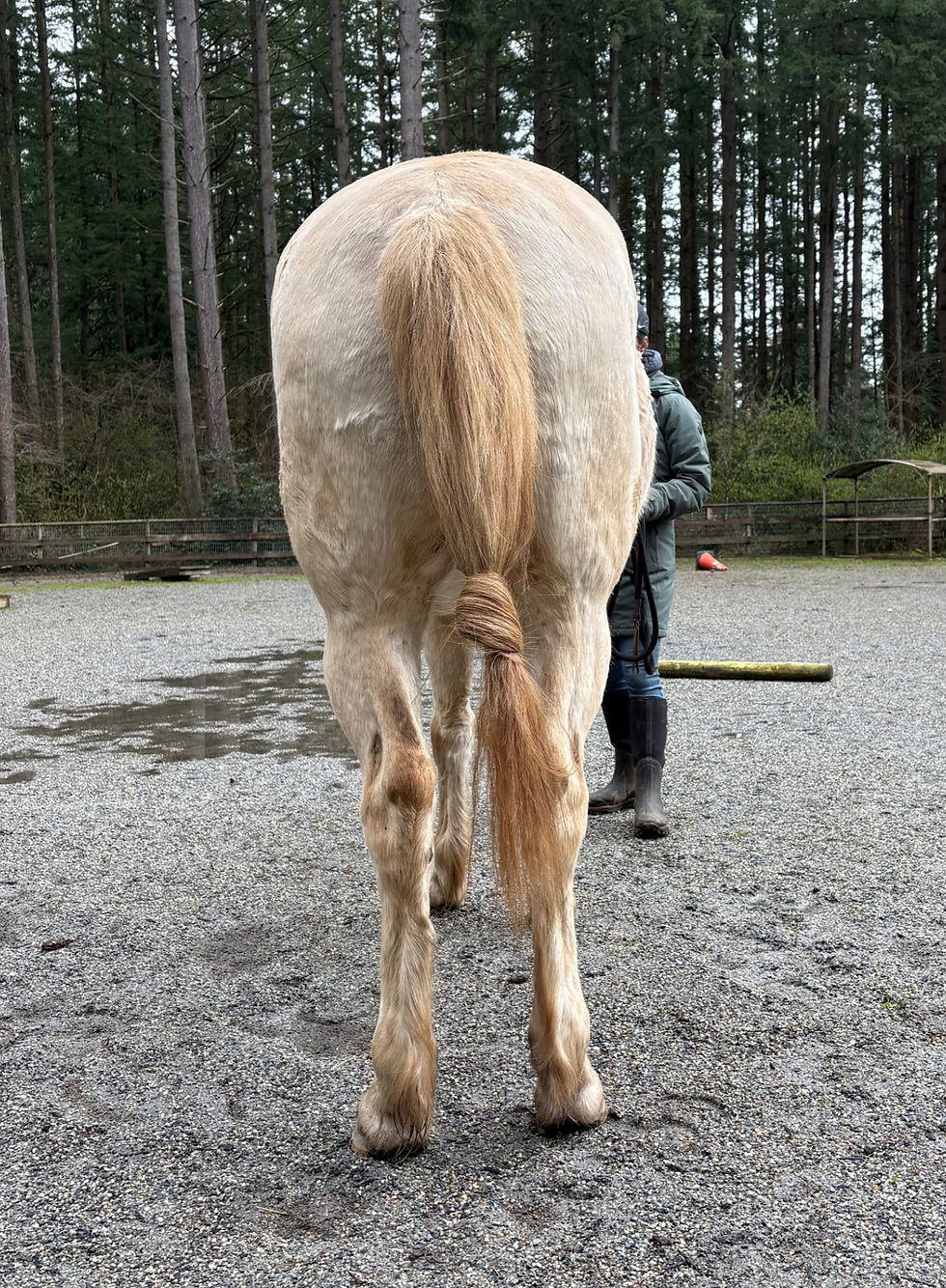Improved Movement In Just One Session
- Elisse Miki

- Feb 1, 2022
- 2 min read
Updated: May 26
How Motor Control Can Change Hind End Loading Immediately
Pre-Treatment Video
Look closely at the loading pattern prior to treatment. The left hip is observed to excessively drop prior to loading which can be seen more globally if you watch the degree of hind end ‘wiggle' occurring. Next, look at left hind foot placement as the horse backs up. The hoof is slightly toe out which indicates an external rotation of the left hip and potentially the stifle or hock as well. This is a common compensation strategy, and leads to favouring of the right hind in this horse's case. We may also observe toe dragging bilaterally and overall weariness in the mind and body with request to back up.
Post-Treatment Video
Post-treatment shows improved bilateral hind end loading pattern with reduced aysmnetrical left hip drop. We may also observe less 'wiggle' and closer to even hoof placement upon landing. Excellent improvements in just one hour!
How Was This Achieved?
The answer may surprise you because it's actually very simple and something anyone can do on their own if they understand the theory.
For this horse, I applied very gentle decompression and soft tissue release around the SI joint and the hip BUT combined these techniques with repeated motor control exercises immediately in treatment to integrate the new tissue lengths into the nervous system. Motor control exercises are among the most valuable and well used tools in my kit as a therapist because releasing tissue without integration back into the nervous system doesn’t tend to sustain.
In order to allow the brain and body (nervous system) to register that these new tissue lengths are safe, useable, and pain-free, we must integrate immediately!
Without motor control integration, the body tends to divert to old compensatory patterns as a protective mechanism. While this is valuable and necessary when injury initially strikes, it is not always supportive of long term healing processes and biomechanics.
To learn more information on motor control, check out a FREE WEBINAR included in one of my online courses for horse owners.
Sign up for the FREE PREVIEW and scroll down to find the webinar on Motor Control (It's in the Motor Control Integrations section).
Ready to Learn More?
Explore our Free Resources for tools you can use right away, dive into our Online Courses to deepen your knowledge, or join one of our Certification Programs to take your equine therapy practice to the next level.






Comments